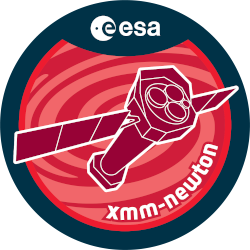

| Proposal ID | 088232 |
| Title | First step in searching for pulsar nulling in X-rays |
| Download Data Associated to the proposal | https://nxsa.esac.esa.int/nxsa-sl/servlet/data-action-aio?obsno=0882320101 |
| DOI | https://doi.org/10.57780/esa-w506p78 |
| Principal Investigator, PI | Dr George Pavlov |
| Abstract | The temporary disappearance of radio emission from a pulsar is known asnulling. The nature of nulling is not fully understood yet, but it isconsidered as evidence of turning off the magnetospheric activity. A changedmagnetospheric activity can affect the pulsars X-ray emission too, inparticular if these changes persist for some time. Nulling pulsars are usuallytoo faint in X-rays to detect emission disappearance in the typically shortnulling intervals. The nearby isolated PSR B1706-16 shows sufficiently longnulling intervals and may be X-ray bright enough to explore the nullingphenomenon in X-rays for the first time. The proposed short observations willestablish the X-ray properties needed for planning a longer follow-up observation. |
| Publications | No publications found for current proposal! |
| Instrument | EMOS1, EMOS2, EPN, OM, RGS1, RGS2 |
| Temporal Coverage | 2022-03-03T07:56:56Z/2022-03-26T21:37:52Z |
| Version | 19.17_20220121_1250 |
| Mission Description | The European Space Agencys (ESA) X-ray Multi-Mirror Mission (XMM-Newton) was launched by an Ariane 504 on December 10th 1999. XMM-Newton is ESAs second cornerstone of the Horizon 2000 Science Programme. It carries 3 high throughput X-ray telescopes with an unprecedented effective area, and an optical monitor, the first flown on a X-ray observatory. The large collecting area and ability to make long uninterrupted exposures provide highly sensitive observations. Since Earths atmosphere blocks out all X-rays, only a telescope in space can detect and study celestial X-ray sources. The XMM-Newton mission is helping scientists to solve a number of cosmic mysteries, ranging from the enigmatic black holes to the origins of the Universe itself. Observing time on XMM-Newton is being made available to the scientific community, applying for observational periods on a competitive basis. |
| Creator Contact | https://www.cosmos.esa.int/web/xmm-newton/xmm-newton-helpdesk |
| Date Published | 2023-04-12T00:00:00Z |
| Last Update | 2025-08-04 |
| Keywords | "emission disappearance", "changed magnetospheric activity", "magnetospheric activity", "pulsar nulling", "radio emission", "nulling '.", "temporary disappearance", "xray properties", "nulling intervals", "nulling phenomenon", "xray bright", "nulling pulsars", "xray emission" |
| Publisher And Registrant | European Space Agency |
| Credit Guidelines | European Space Agency, Dr George Pavlov, 2023, 'First step in searching for pulsar nulling in X-rays', 19.17_20220121_1250, European Space Agency, https://doi.org/10.57780/esa-w506p78 |